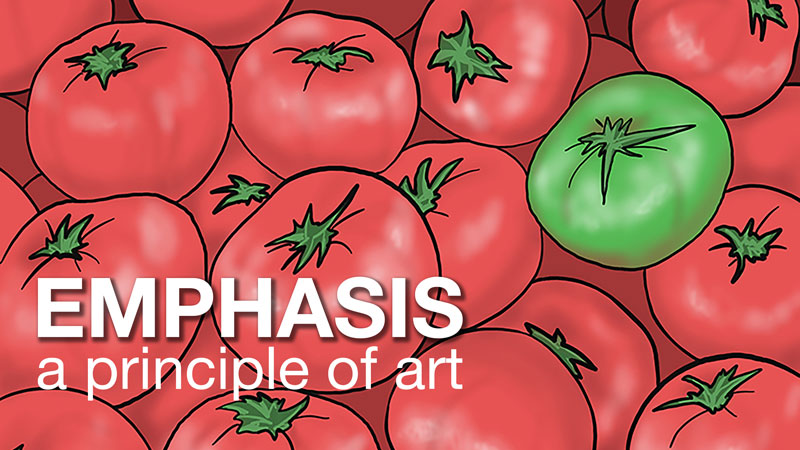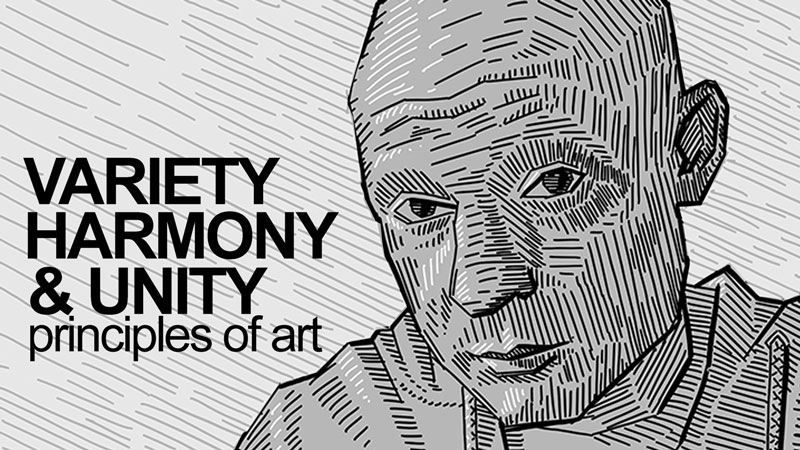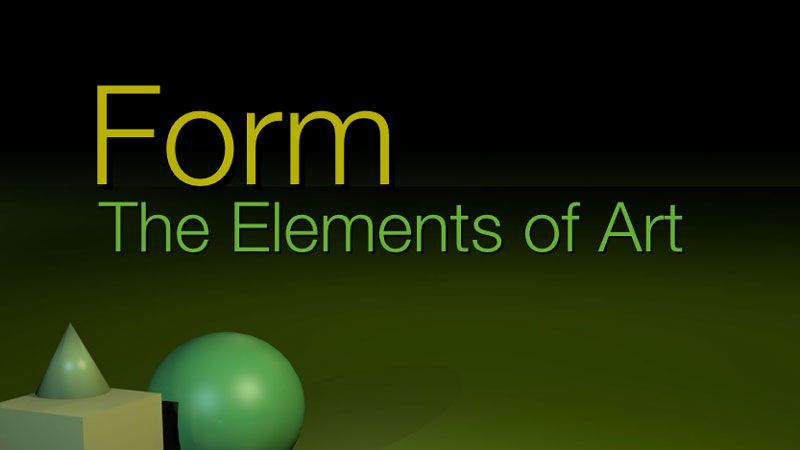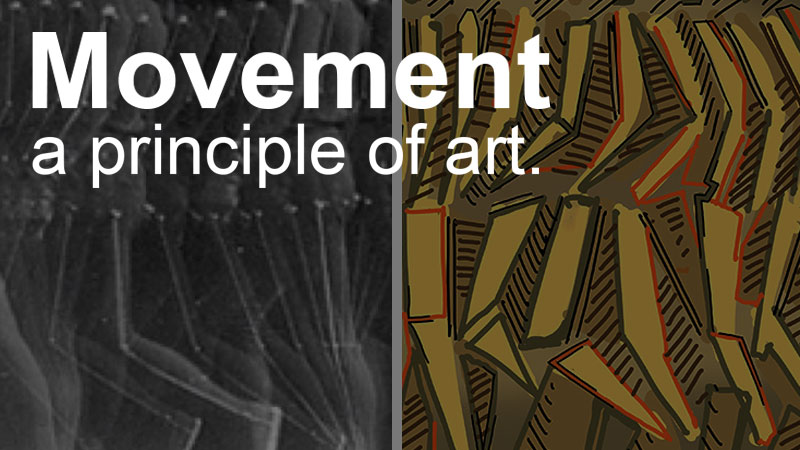
Visual movement is the principle of art used to create the impression of action in a work of art.
Movement can apply to a single component in a composition or to the whole composition at once. Visual movement is dependent on the other elements and principles of art. Rhythm, line, color, balance and space are all examples of elements and principles of art that can play a major role in developing movement in a work of art.
Creating Movement with Rhythm
In the arts, rhythm is most closely associated with music and dance. Musical rhythm involves a beat that is repeated over time. Visual rhythm is created by repeating shapes (a pattern), lines, colors, or any other visual component.
Visual rhythm is everywhere. Rows of windows and columns add rhythm to architecture. Books on a shelf and tiled floors add rhythm to daily life. Each of these examples have something that is repeated.
The repeating element is generally referred to as a motif. To create movement through rhythm, an artwork must have a motif.
If a motif is variable in size and spacing, then the rhythm is said to be irregular. An irregular rhythm feels natural. Trees growing in a forest have an irregular rhythm. Each tree is unique. Some are thin and some are wide, but all are trees.
If the motif is identical in size and spacing it is said to be regular. A regular rhythm feels organized and intentional. Lamp posts along a city street have a regular rhythm – each one the same as the next.
A motif acts as a guide through the composition. Our eyes move from one example of the motif to the next. The amount of space between manifestations of the motif set the tempo or speed at which our eyes move around the composition.
See also: 5 Tips for Better Compositions
Look at the images below. On the left is a photograph by Étienne-Jules Marey. This is a study of a person walking. The motif is obviously the person. The rhythm of the repeating person generates a feeling of movement in the composition. Notice the interesting, angular shapes between each frozen position of the figure.
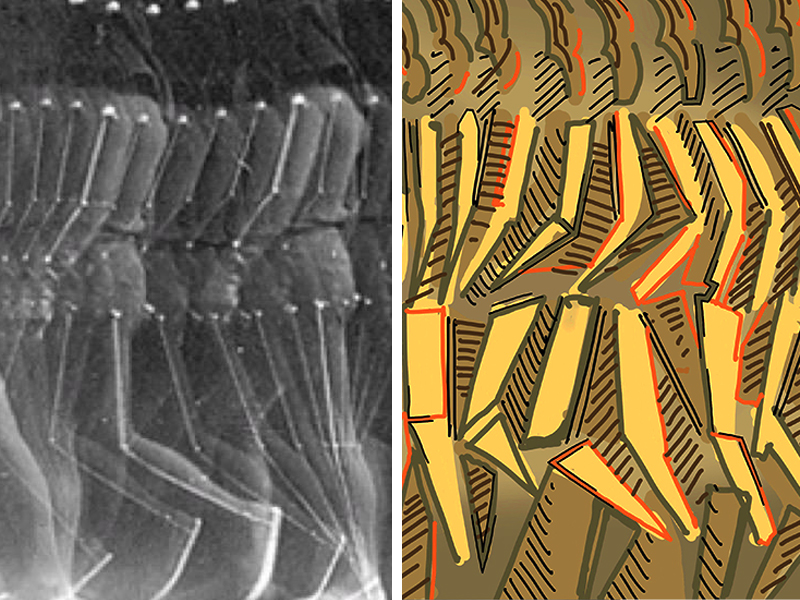
In the drawing on the left there is technically no person. The irregular, angular shapes from the photo are the subject. The progressive, repetition of the shapes generate movement in the composition. The drawing is directly inspired by Marey’s photograph and indirectly inspired by the work of Futurist artists from a century ago.
Futurists meant to capture movement, speed, and power. The Futurists were inspired by the motion of trains, motorcycles, athletes and the like. Futurism began in 1909 and continued through the 1920s. We can learn quite a bit about capturing movement by exploring the work of great futurists including Marcel Duchamp, Joseph Stella, and Giacomo Balla.
Creating Movement with Lines
We can think of lines as being either static or dynamic. Straight lines that are vertical and horizontal feel solid and stable. Most buildings utilize vertical and horizontal edges because of the real-world stability these lines provide when they meet at right angles.
Dynamic lines, on the contrary, do a much better job at implying movement. Dynamic lines are often diagonal to the edges of the picture plane and may zig-zag or become sweeping curves.
Lines can also communicate movement in another way. A drawn line is really the path. The locations where a line begins and ends reveal the movement of the artist’s hand. In art, a line is sometimes defined as a moving dot. Artists apply this unique concept of a line to “trace” the path something is taking through a picture. Look at the image below. The lines tell us that our Karate hero is moving upward and to the right.
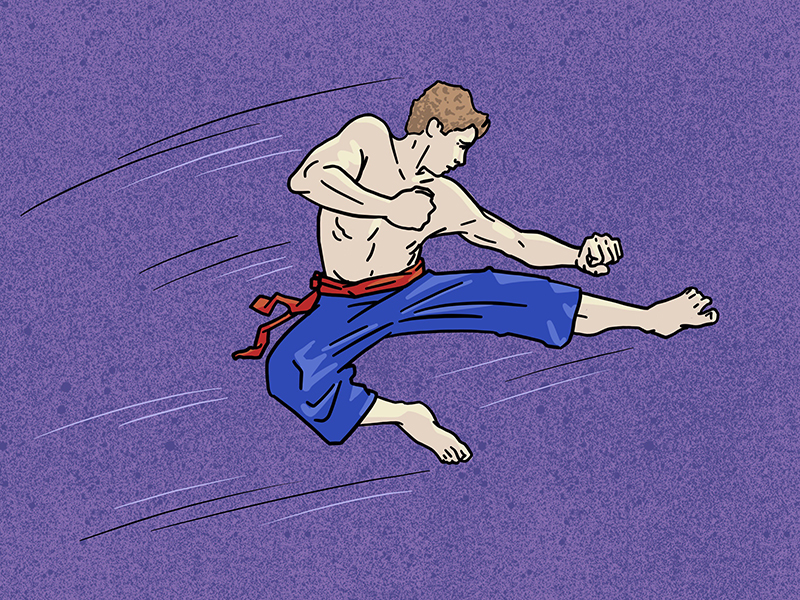
Creating Movement with Color
Just as dynamic lines add movement to an otherwise “still” work of art, the dynamic use of color can enhance the feeling of movement as well. Like musical notes, “color notes” are sometimes described as either high or low key. A high key color is both light in value and strong in chroma (intensity).
Conversely, a low-key color is both dark and dull. The high contrast juxtaposition of these color types is louder and busier than a picture of limited key-range. The image below juxtaposes high and low-key colors. The colors and the dynamic lines are working together to impart a feeling of movement.
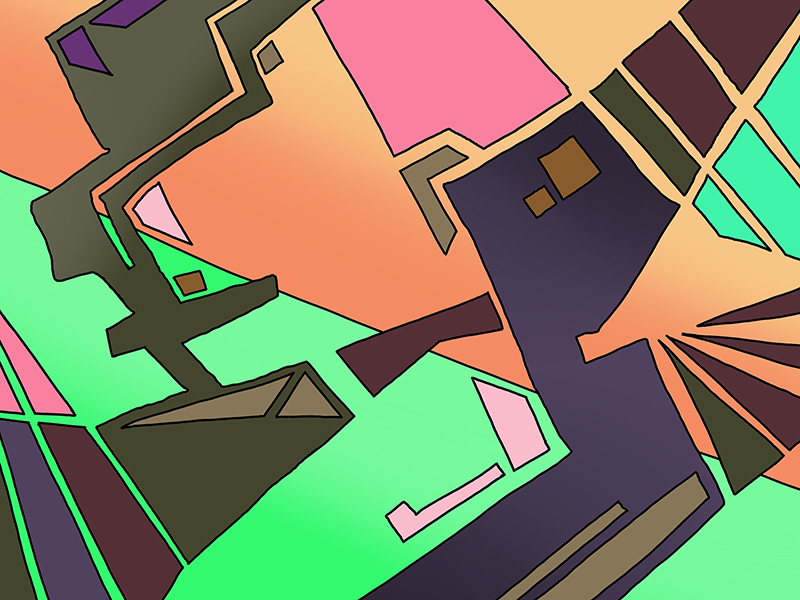
Implied Movement
Perhaps the best and most straight forward way to show movement in a work of art is to carefully study how things change when in motion. For example, how does a person change when walking versus standing still? Or, how does a person appear when running versus walking. By changing the balance point and posture of a person, the artist can convey a static standing figure or the movement of a person walking or running.
The painting, Spanish Dancer, by John Singer Sargent, clearly illustrates implied movement. See how the dancers head is well left of her feet and not centered over the feet. The relative orientation of the head and feet tells the viewer that she is in either motion or off balance. Gravity is taking her left. She is going to have to keep up by moving her feet or she will fall. Of course, she will not fall because she is, in fact, dancing.
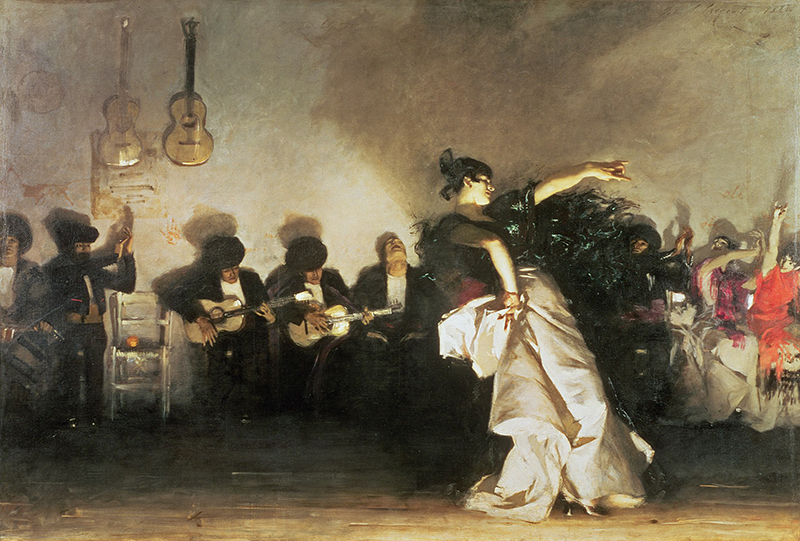
The artist can also imply movement by placing the subject in space in a way that only makes sense if it is moving. For example, a ball floating in the foreground must be moving if the background includes a person in a throwing position. Both the ball’s position in space and the context of the person throwing are enough to imply motion.
Creating Movement with Illusion
A few artists took the concept of compositional movement to a new level in the mid-twentieth century with the development of Op Art. Short for “optical art”, some Op Art artists created movement through repetition and contrast. Having no representational subject, Op Art makes use of the brain’s natural efforts to organize complex visual sensory information. We can think of this approach as overloading the sense of sight. Creating the sensory experience of movement in a still image is engaging and exciting to the viewer. Does the image below feel as though it is moving around a bit? Is it hard to focus on a single spot?
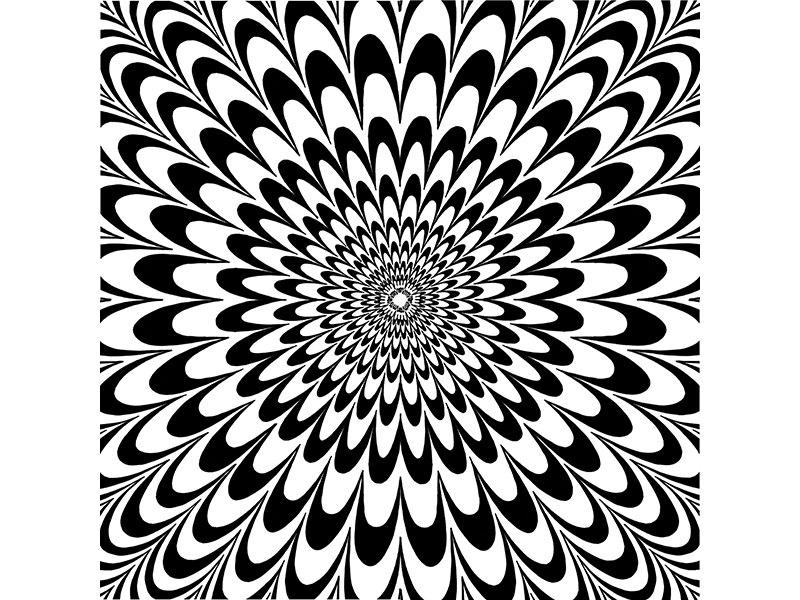
Conclusion
Movement is almost never boring. It adds excitement, drama, and overall compositional interest to art and design. Don’t shy away from subject matter that includes action. Instead, put the concepts described above into action.
If so, join over 36,000 others that receive our newsletter with new drawing and painting lessons. Plus, check out three of our course videos and ebooks for free.


